

There are many Carnegie libraries which could only be found in Scotland, where the building materials and sources of architectural inspiration are unique. Stirling Central Library, Stirlingshire
This library is a superb example of Scots Baronial architecture by Harvey Ramsay Taylor of Edinburgh
The foundation stone was laid by Mrs Louise Carnegie on 11th October 1902, after Andrew Carnegie had received the freedom of the burgh.
The library was officially opened on 6th February 1904 by Provost Thomson, who then sent a cablegram to Mr. Carnegie in New York City. Architect's perspective drawing of Stirling Central Library
Kirkwall Library, Orkney Isles
This is Scotland's most northern and most remote Carnegie library. It was however opened by Andrew Carnegie, who after his retirement lived much of his time at his mansion at Skibo, which is in the county of Sutherland, at the very north of the Scottish mainland. Carnegie crossed the Pentland Firth by the mail steamer to receive the freedom of the burgh of Kirkwall and to open the new library.
The library was officially opened by Andrew Carnegie on 9th September 1909.
Jedburgh Library, Roxburghshire
This is one of the earlier Carnegie libraries, dating from 1900. Jedburgh is the former county town of Roxburghshire, and is just 10 miles from the English border.
Rutherglen Library, Lanarkshire
This library was built with funds amounting to £7,500 given by Andrew Carnegie to the Royal Burgh of Rutherglen in 1905.
The library was officially opened on 25th September, 1907 by Provost Joseph Johnstone (right), who was presented with a golden key by the architect, Mr. Sinclair.
Maybole Library, Ayrshire
In 1905 Andrew Carnegie gifted the small sea-side town of Maybole a sum of £2500 towards the erection of a library and recreation rooms. The additional cost of providing the recreation rooms and books for the library was met by public subscription.
Kelso Library, Roxburghshire
Carnegie contributed £3500 for this library which is situated in a little courtyard. It is of rather domestic proportions more akin to the Carnegie Libraries of rural Ireland, where the libraries can sometimes be not much bigger than the surrounding houses.
The library was opened on 16th May 1906 with a ceremonial key presented to Carnegie's representative, Hew Morrison, by Provost Crichton Smith.
Hawick Library, Roxburghshire
Hawick Public Library occupies a corner site on top of a hill with asymmetrical frontages sloping away from a central tower. The nature of the site no doubt contributed to the unusual design of the architect, J Nicholl Scott.
The library was opened in 1904. Its current use remains as a branch library.
The architect's perspective drawing, below, was displayed at the Royal Scottish Academy Exhibition of 1902 in Edinburgh.
Exhibition drawing of Hawick Library, 1902
Innerleithen Library, Peeblesshire
The small village of Innerleithen in the Borders boasts a fine Carnegie library which dates from 1903.
The architect was Peter Henderson who had an independent practice in Edinburgh.
Henderson also designed the Carnegie library in Kinross, although he specialised in designing public houses and breweries.
Dumbarton Library, Dunbartonshire
This little library was built in a much smaller scale than the larger, more grandiose libraries in the surrounding areas of Glasgow and Clydebank. Its modest size allowed it to be designed in a neat domestic style which displays many of the mock-Renaissance features which were fashionable in the houses of the well-to-do in Edwardian Scotland.The architect was William Reid of Church Street, Dumbarton.
The library was opened in September 1910.
Prestonpans Library, East Lothian
Prestonpans Library, on the Firth of Forth, east of Edinburgh,
was designed by James Pearson Alison of Hawick, who had been unsuccessful in the competition for his hometown library, which is shown earlier in this page.
Andrew Carnegie had initially gifted £1000 towards the building costs, which was later increased to £1500. The local community raised enough money to purchase over 3000 books for their new library. The plaque reads " This building was gifted by Andrew Carnegie
Esq. LLD. MCMV". The donor's Christian name is split as "And"..."Rew" to fit in
with the art-nouveau motifs.
Some Carnegie Libraries give an interesting insight into Edwardian civic architecture in Scotland in general. A few local authorities used Carnegie's financial assistance to add libraries onto their new council chambers.
Bo'ness Library, near Grangemouth, was built in conjuction with a new Town Hall in 1904. The substantial complex in Glebe Park was built on top of a hill overlooking both the town and the Firth of Forth. It replaced the earlier Town Hall of 1883.
Whereas the Classical and classically influenced styles can be seen throughout the world, Scottish building patterns are very rarely duplicated elsewhere.
The libraries illustrated below give an insight into the extent of this architectural variety.

The intentionally asymmetrical design is cleverly balanced, with the main feature being the massive round tower at the corner. The remainder of the façade is highly decorated with many intricate details.
This building illustrates the attempts by many of the architects of the time to revive the older Scottish style, and to move away from classical influences. Taylor's use of Ionic columns at the doorway, however, shows how ubiquitous classical elements could still be.
Its current use is as the central library for Stirling Council.
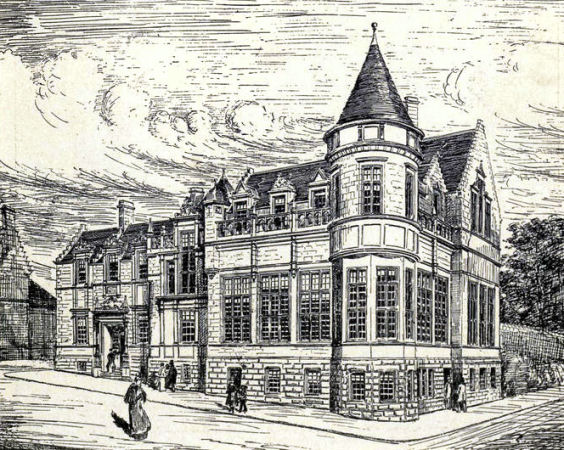
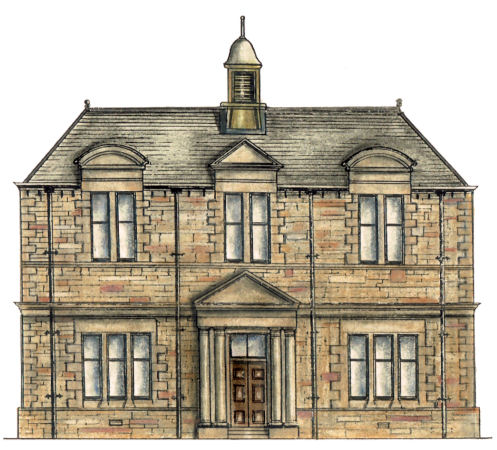
Kirkwall had the oldest public library in Scotland, dating from 1683, the Publick Bibliothick of Kirkwall. The books from this collection are today kept by the University Library, Aberdeen.
The two storey building was designed by J Malcolm Baikie. The library is built with local Walliwall flagstone in Scottish style. The portico is of sandstone from the island of Eday, while the roof slates were imported from Norway.
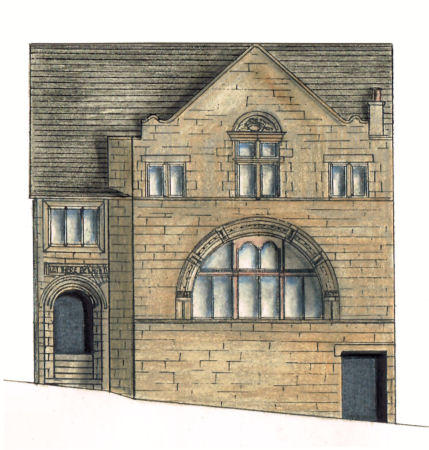
The library was designed in the Scots Renaissance style with a modern touch by George Washington Browne, who was also the architect of the library in nearby Kelso. The façade's main feature is the large arched window facing the Castlegate which gives the library a unique character.

The architects were Sinclair and Ballantine of Glasgow, who designed a library with similar bay windows, height and style of a typical Glasgow tenement building.
Situated on the busy main street, the three-storey library blends into the tenements of the surrounding streets.
Although the top floor was used for the Librarians flat, there are still plenty of decorative touches to distinguish the library as a public building rather than a housing block, with the recessed entrance being particularly attractive.
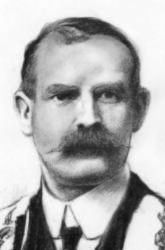
Rutherglen was granted the status of Royal Burgh by King David I of Scotland in 1126, but it no longer has its own Council and Provost. It is now in the area covered by South Lanarkshire Council which is based in Hamilton. The library is currently operated by that council.
From 1975, throughout the 20 years of the existence of Strathclyde Regional Council, Rutherglen was part of the city of Glasgow. It never lost its separate identity in the eyes of the local population however, and was returned to Lanarkshire when the Regional Councils were abolished.
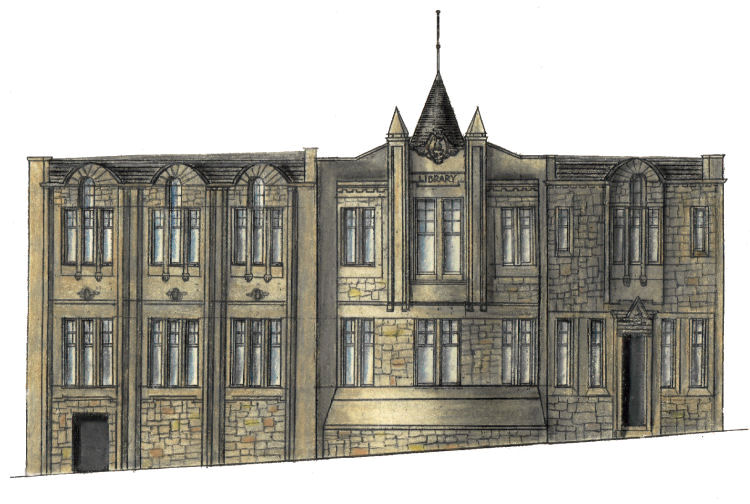
The library is situated opposite Maybole Castle which dates from the late 1500`s. It blends in well with the ancient turreted tower and is built with similar cream coloured stone. The library occupies a prominent corner site on a steep slope, which adds to the uniqueness of James Kennedy Hunter's Scots Renaissance design.
The foundation stone was laid by the local freemasons at a ceremony in 1905, with the town band leading Provost James Ramsay and the whole population of Maybole in procession.
After falling into a state of disrepair, the library has been unoccupied for many years, unlike the castle which is still in use as offices.
In August 2000, the local council pledged £560,530 to refurbish the Carnegie building.
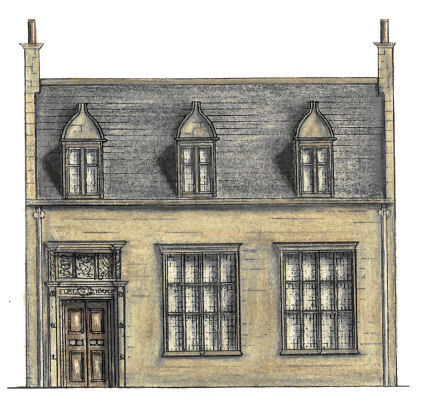
George Washington Browne's design is a combination of French Renaissance with Scottish touches to make the library fit in with the other buildings of the town. It was constructed in cream sandstone similar to that used for the older buildings of Kelso.
There are three attractively shaped dormer windows in the roofspace, providing staff accommodation within the building.
The entrance features a carved panel in the stonework above the door showing rays of sunlight from an enlarged sun and Carnegie's "Let there be Light" motto, as used in his personal bookplate.
Its current use remains as a branch library.

It is built in a dull reddish sandstone which now requires cleaning to reveal its true colour. The entrance features the library's title in Art-Nouveau script in the stone plate over the doorway, showing hints of the modernity which was prevalent in Scotland at the turn of the century when the Carnegie libraries were being designed. The entrance itself is more in the traditional Scots style.
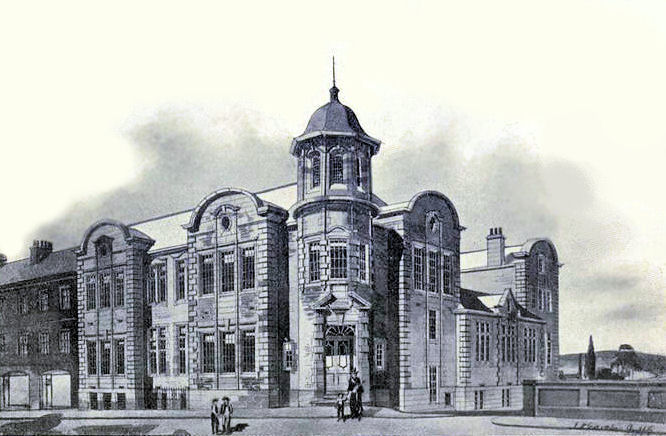
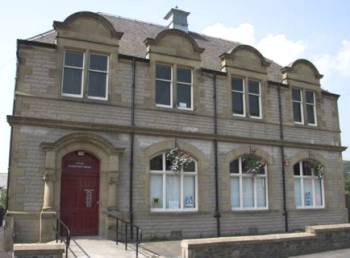
Its facade was constructed with a bright rock-faced sandstone with smooth ashlar trims around the windows and door.
The stonework has been cleaned to reveal the original subtle tones.
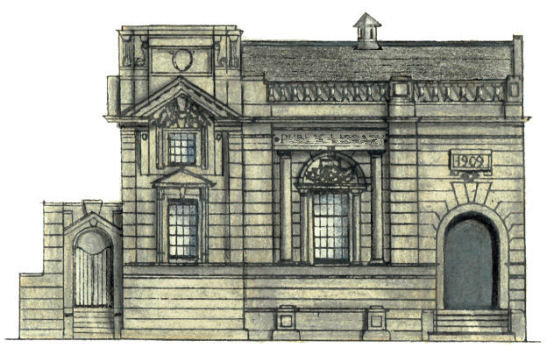
It was constructed with a light sandstone from the nearby Dalreoch quarry which, over the years, has weathered into the dark grey which is so typical of the stonework of the West of Scotland.
Its current use remains as a branch library.
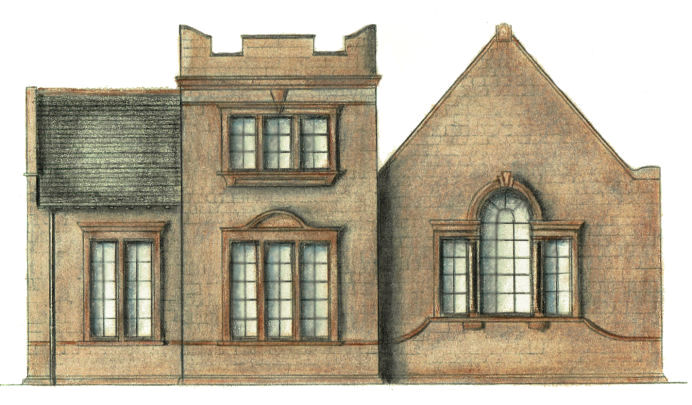
The façade of Prestonpans library shows a freshness of style,
venturing away from Scottish small town conventionality. The rock-faced red sandstone walls are complemented by the smooth ashlar trims at the windows and around the central turret. The internal finishes have been remarkably well preserved, with layers of dark varnish covering both the original matchboard lined walls and internal furnishings. The librarians flat above the library is still in
occupation, with lots of sound insulation to protect the ears of the borrowers!
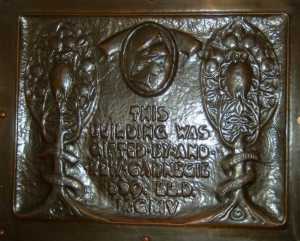
The building was officially opened by Carnegie's faithful Scottish representative, Dr Hew Morrison, in December 1905, as the
art-nouveau copper plaque (left) at the entrance hall shows. The
modern script and extravagant decoration on the plaque makes the actual
inscription about the donor very much a secondary affair.

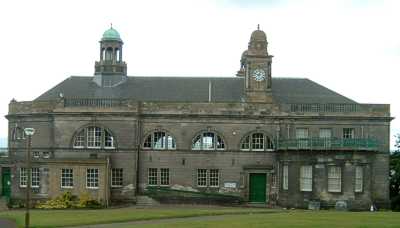
The architect of the building, Sir George Washington Browne, had an extensive list of Edinburgh buildings to his credit, including the Central Library on King George IV Bridge, which is featured in the Early Carnegie Libraries
page of this site.
It was designed in a rather eccentric style for a public building of the era with near identical frontages to font and rear, reminiscent of Alexander Greek Thomson's Maria Villa. The most unusual feature must be the twin clock towers placed directly behind each other, facing out from either side of the building.
The library, which moved to a new site in 1980, was situated to the right of the above photograph with a large semi-circular room projecting outwards. The Town Hall occupied the rest of the building.
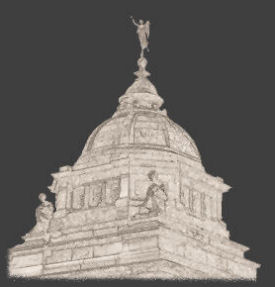 |
| |
|
|
|
|
|
|
|
|
|
|
|
|
|
|
|
|
|
|
|
|
|
|
|
|
All original artwork, photography and text © Gerald Blaikie
Unauthorised reproduction of any image on this website is not permitted.